Blood Flow in a Coronary Bifurcation, Paper Numerical Validation, ANSYS Fluent
$240.00 Student Discount
In this project, The effects of non-Newtonian blood, compliant walls, and different bifurcation angles on hemodynamic flow characteristics were evaluated, and the results of this simulation have been investigated.
Click on Add To Cart and obtain the Geometry file, Mesh file, and a Comprehensive ANSYS Fluent Training Video.To Order Your Project or benefit from a CFD consultation, contact our experts via email ([email protected]), online support tab, or WhatsApp at +44 7443 197273.
There are some Free Products to check our service quality.
If you want the training video in another language instead of English, ask it via [email protected] after you buy the product.
Description
Blood Flow in a Coronary Bifurcation Introduction
The paper “Numerical investigation of blood flow in a deformable coronary bifurcation and non-planar branch” numerically investigates the pulsatile flow of blood in a coronary bifurcation with a non-planar branch. The wall is assumed to be compliant to create a more realistic analysis.
Identification and assessment of hemodynamic characteristics and other flow properties impact the behavior and prevention of cardiovascular diseases. Stenosis is highly dependent on the local hemodynamic characteristics of blood flow. Since coronary artery diseases are associated with a high mortality and morbidity rate, the hemodynamic characteristics of blood flow demand more attention.
For this purpose, The effects of wall compliance and non-Newtonian rheology of blood on flow characteristics have been simulated using Ansys Fluent software.
Blood Flow in a Deformable Coronary Bifurcation Description
The effects of non-Newtonian blood, compliant walls, and different bifurcation angles on hemodynamic flow characteristics were evaluated. Shear-thinning of blood was simulated with the Carreau-Yasuda model. The current research was mainly focused on the flow characteristics in bifurcations since atherosclerosis occurs mainly in bifurcations. Moreover, as the areas with low shear stresses are prone to stenosis, these areas were identified.
The pulsative velocity of blood at the inlet face is presented in the following figure, while the suitable equation of motion is derivate using MATLAB software and applied in the Fluent by an appropriate UDF.
 Geometry & Mesh
Geometry & Mesh
Firstly, The geometry of the solution is designed using Gambit software.
For meshing, the following factors are used:
Start size = 0.25
Growth rate = 1.25
Max. size = 0.5
The number of the elements is precisely 397388:
Blood Flow in a Deformable Coronary Bifurcation CFD Simulation
We consider several assumptions to simulate the present model:
- We perform a pressure-based solver.
- The energy equation is off.
- The present model is unsteady.
- The effect of gravity is considered.
The following table represents a summary of the defining steps of the problem and its solution:
| Material Properties | |
| Name | Blood |
| density | 1050 |
| viscosity | Carreau model |
| Boundary Condition | |
| Type | Amount (units) |
| Outlet | |
| Outlet1 | gauge pressure = 0 pa |
| Outlet2 | gauge pressure = 0 pa |
| wall | |
| Vessel-wall | No-slip |
| Velocity-Inlet | |
| inlet | UDF inlet velocity |
| Models | ||
| Energy | off | |
| Turbulence models | ||
| viscous model | laminar | |
| Dynamic Mesh | |||
| Mesh Methods | Smoothing | ||
| Method | Linearly Elastic Solid | ||
| Vessel Wall | Deforming | ||
| Solution methods | |||
| SIMPLE | pressure velocity coupling | ||
| Second-order upwind | pressure | spatial discretization | |
| Second-order upwind | momentum | ||
| Initialization | ||
| Hybrid initialization | initialization method | |
| Run calculation | ||
| Number of Time Steps | 35 | |
| Time Step Size | 0.01 | |
| Max Iterations | 200 |
Results & Discussion
To validate the present numerical simulation results, the diagram in Figure 6 of the article has been used. This diagram shows the wall shear of the walls of Coronary. The X-direction of the diagram shows the distance from the bifurcation. Boundaries of the model. The amount of presented wall shear stress was obtained along Line 3, found in Figure 1 of the article.
A comparison of the results of the current numerical simulation with the results of the numerical work of the article is shown in the image album.
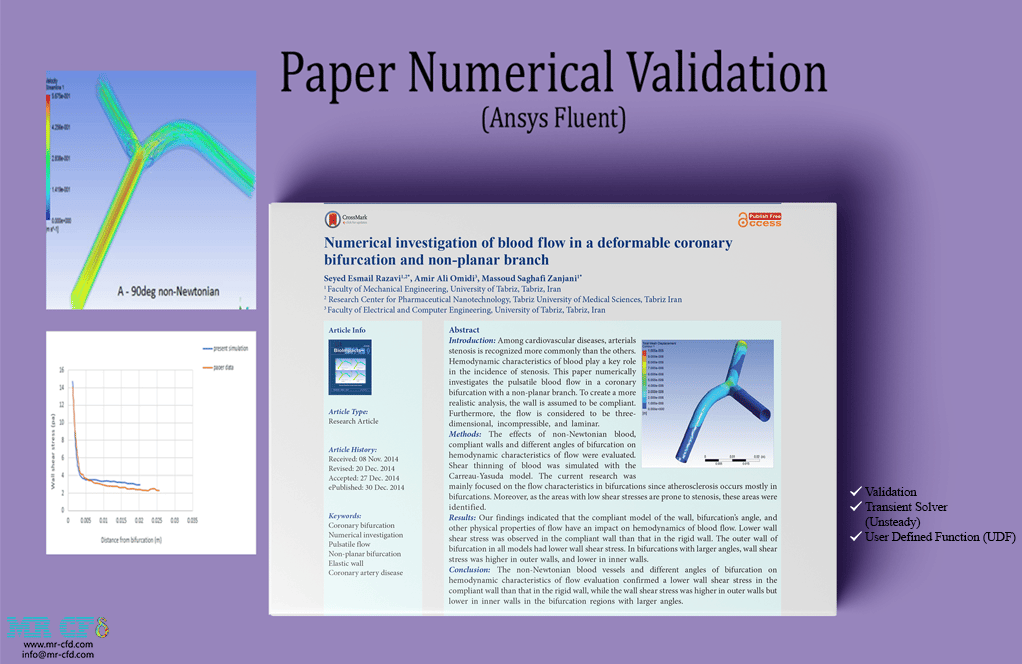
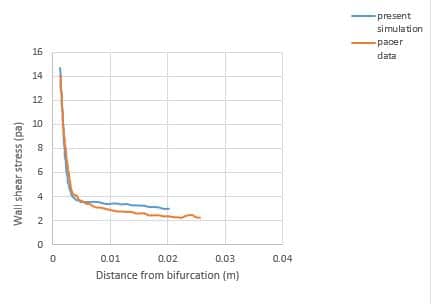
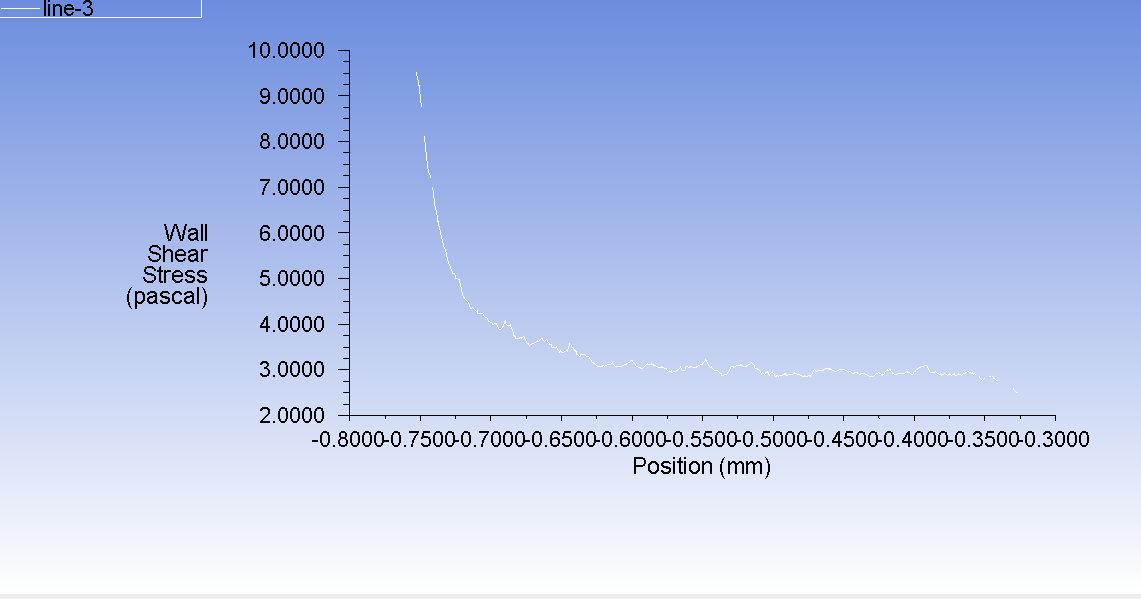



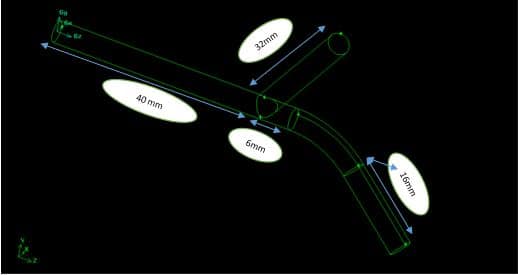
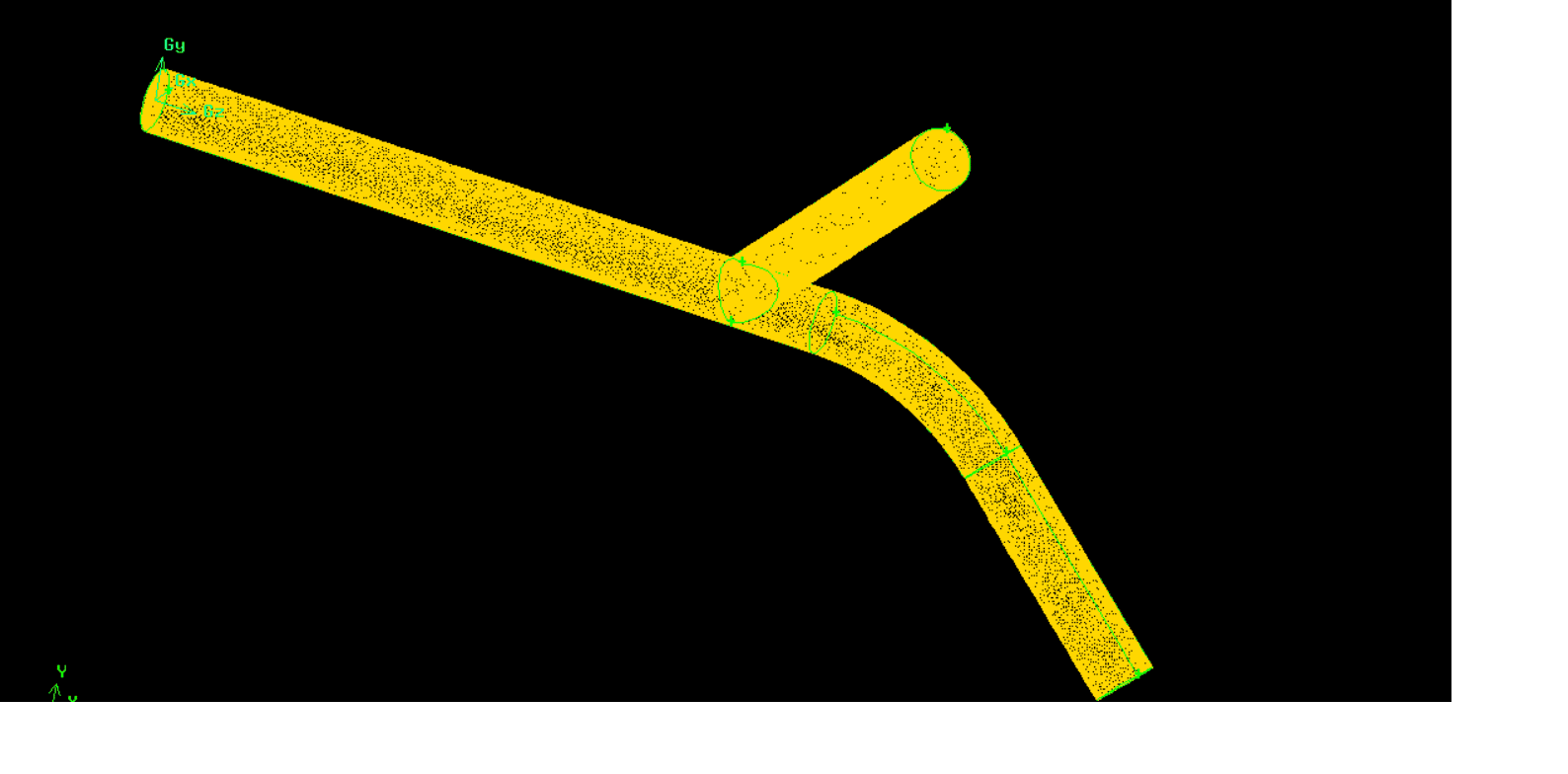

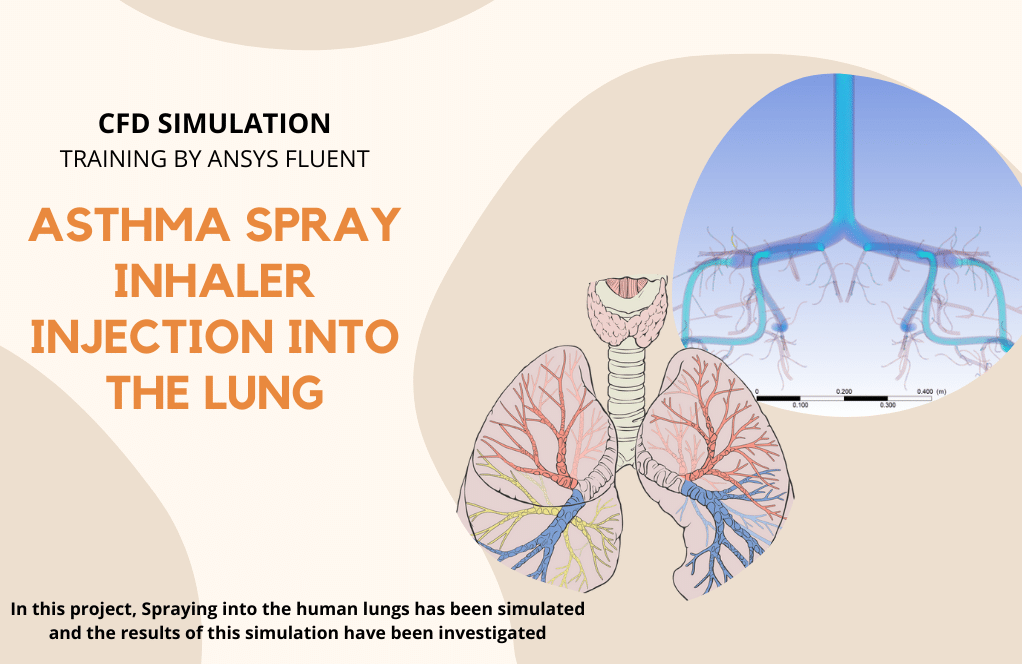

Krystal Rutherford –
The complex simulation of blood flow in coronary bifurcation as given in this review is fascinating! It’s impressive that wall compliance and non-Newtonian flow properties could be predicted with such detail. What was the greatest benefit observed by including the compliant wall in the simulation in terms of simulation accuracy or clinical relevance?
MR CFD Support –
Including a compliant wall in the simulation allows for a more accurate representation of the real mechanical behavior of arteries. Arterial walls are not rigid; they expand and contract with the pulsatile nature of blood flow. Considering wall compliance enhances the prediction of hemodynamic forces which affect the artery walls. This is crucial for understanding the pathology of diseases like atherosclerosis that highly depend on vascular dynamics. Furthermore, the ability to predict areas of low shear stress that are prone to stenosis is clinically significant for preventing coronary artery diseases. As a result, a more realistic analysis can lead to improved diagnostics and therapeutic strategies.
Tatyana Rodriguez –
The product description was very insightful. It helped me understand how the blood flow in a coronary bifurcation is simulated considering critical factors such as wall compliance and non-Newtonian rheology. Great work!
MR CFD Support –
Thank you for your kind words! We are glad to hear that our product provided you with a clear understanding of the hemodynamics involved in coronary bifurcations. If you ever have any further questions or need assistance, don’t hesitate to reach out!
Frederick Kris –
This product seems very detailed. I would like to know, can this simulation be modified to fit custom geometries of patients’ coronary bifurcations or is it limited to the specific model provided?
MR CFD Support –
Yes, the simulation setup can be adjusted to fit custom geometries of patients’ coronary bifurcations. The flexible nature of software like ANSYS Fluent allows for the creation of personalized models and simulations that can cater to a wide range of geometric variations reflecting individual patient anatomy.
Ashlynn Daniel –
The simulation presented is incredibly fascinating! The attention to detail and precise modeling of coronary bifurcation blood flow is essential for understanding cardiovascular diseases. Great job on showing the impacts of wall compliance and non-Newtonian behavior on hemodynamics. It truly highlights the rigorous work the MR CFD team put into this study.
MR CFD Support –
We deeply appreciate your thoughtful words and recognition of our work on simulating blood flow in coronary bifurcations. It is heartening to know that the detailed analysis and the effort to model these crucial physiological processes have made a positive impression. Thank you again for your kind review.
Miss Jude Nader –
The review was really fascinating and informative! The detailing around the use of Carreau-Yasuda model for shear-thinning simulation was really insightful. Were there any particular challenges encountered during the simulation of the pulsatile blood flow in terms of mesh deformation or solver settings to ensure stability and accuracy?
MR CFD Support –
Thank you for your positive feedback and interesting question. In simulating the pulsatile blood flow, stability and accuracy are indeed pivotal. Mesh deformation was addressed through a carefully selected dynamic mesh methodology. The solver settings, like adopting SIMPLE scheme for pressure-velocity coupling and second-order upwind discretization for momentum, were crucial for ensuring a stable and accurate solution. Moreover, proper initialization and adherence to a suitable time-step size play significant roles in overcoming numerical challenges in such simulations.
Prof. Johathan Greenfelder –
The review was wonderful at explaining the simulation experience! I appreciated that the simulation includes diverse factors like wall compliance, non-Newtonian fluid properties, and geometry considerations, mimicking physiological conditions. It highlights both the set-up and the comprehensive nature of the CFD analysis, enhancing the reliability of the simulation for cardiovascular disease research.
MR CFD Support –
Thank you very much for your kind words and positive feedback on our Blood Flow in a Coronary Bifurcation simulation product. It’s rewarding to know that the simulation met your expectations and that the level of detail provided contributes meaningfully to studies in cardiovascular diseases. We’re glad you appreciated the effort put into replicating the complex behavior of blood flow. Should you need any further assistance or information on our products, please reach out to us.